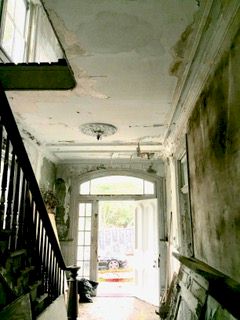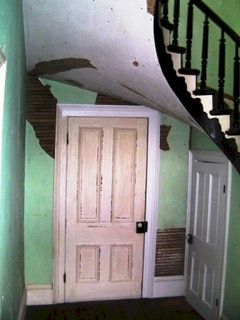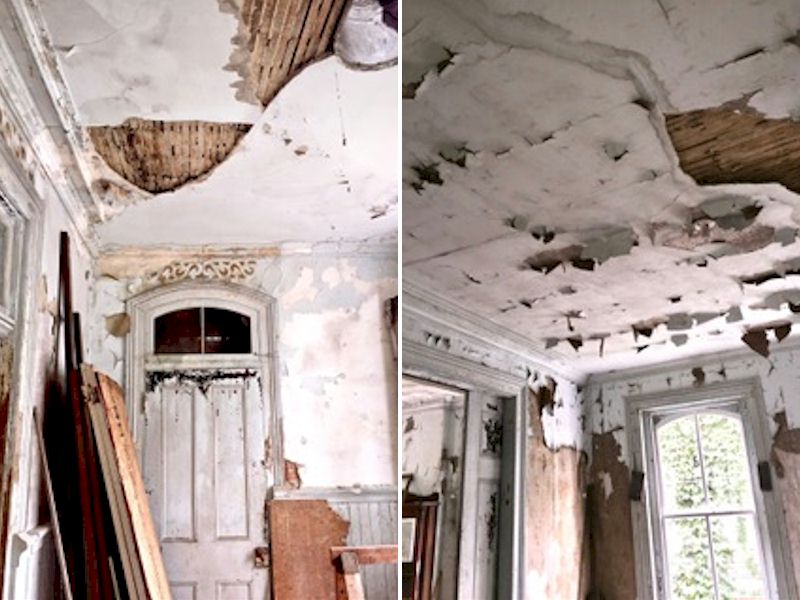A guest blog by Philip Lamachio on the state of plaster restoration in Southern Virginia
I recently visited Danville to do an analysis and proposal for a newcomer moving to the area. He had bought a beautiful old church in much need of thoughtful renovations. Many of the walls had been ‘patched in’ with drywall and areas of concern on the ceiling had been globbed with more mud, rather than removing relatively small areas of detached plaster and replacing it. Of course, now the drywall had to be removed, as it was not installed very well and didn’t match the old plaster!
Subsequent conversations with several contractors and preservation-minded folks throughout the region slowly revealed a surprising and pervasive state of mind in these historic towns.
While many Southern Virginia towns seem to enjoy an abundance of absolutely mind-blowing examples of historic architecture, many folks are actually ripping out their plaster and replacing it with drywall!
 As a contractor working in the plaster restoration field in neighboring North Carolina for over 30 years, this came as quite a surprise. Here, where historic buildings are less common, people really appreciate vintage and historical homes. And when they can afford to repair the plaster (and can find someone competent to do the work) they almost always do that– for various reasons.
As a contractor working in the plaster restoration field in neighboring North Carolina for over 30 years, this came as quite a surprise. Here, where historic buildings are less common, people really appreciate vintage and historical homes. And when they can afford to repair the plaster (and can find someone competent to do the work) they almost always do that– for various reasons.
First, it is part of the historic fabric of the house. Many folks choose older, historically significant or homes because they want to connect to the past and preserve it for the future. In many cases, they are better built and have a charm a new home lacks.
Many tell me they feel a historic home is theirs to care for, then to pass it on in good condition to future generations. In many cases, removing the plaster and replacing it with drywall would defeat the purpose of buying a historic home in the first place.
If the exterior is historically correct but the inside looks like a modern house, why not just build a new modern house instead?
 Additionally, plaster has several qualities that drywall does not have. It’s a dense, sound dampening material. It feels cooler in the summer and withstands impact better than drywall. And it is quite repairable if you take a little care, use the proper materials, and have a little know-how.
Additionally, plaster has several qualities that drywall does not have. It’s a dense, sound dampening material. It feels cooler in the summer and withstands impact better than drywall. And it is quite repairable if you take a little care, use the proper materials, and have a little know-how.
Thirdly, plaster is not perfectly flat, like drywall. That is because it was applied by hand-trowel, thus is often slightly wavy. And that’s part of the charm.
Sure, there are instances when tearing out the plaster to the studs makes perfect sense, like when you are completely remodeling a kitchen. In most cases though, removing/replacing all the plaster can be more costly than simply repairing, even after other contractors have done their work.
It may come down to the fact that when something is abundant, we don’t value it.
Philip Lamachio graduated in 1985 from NCSU with a degree in Architecture. His company, Estate Plaster, has been in operation in NC since 1992 and focuses on plaster repair and restoration. Estate Plaster has restored thousands of homes throughout North Carolina, Virginia, and South Carolina.
